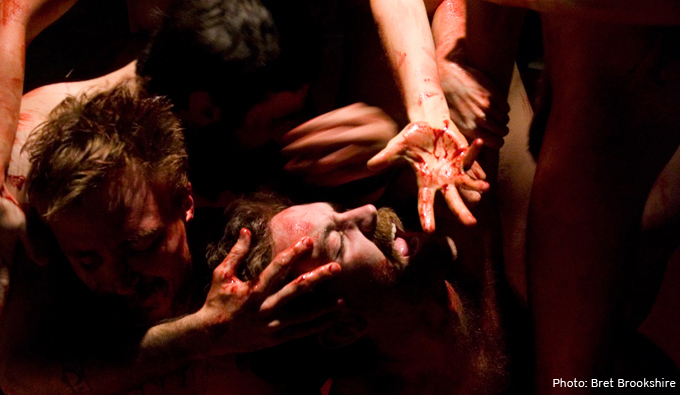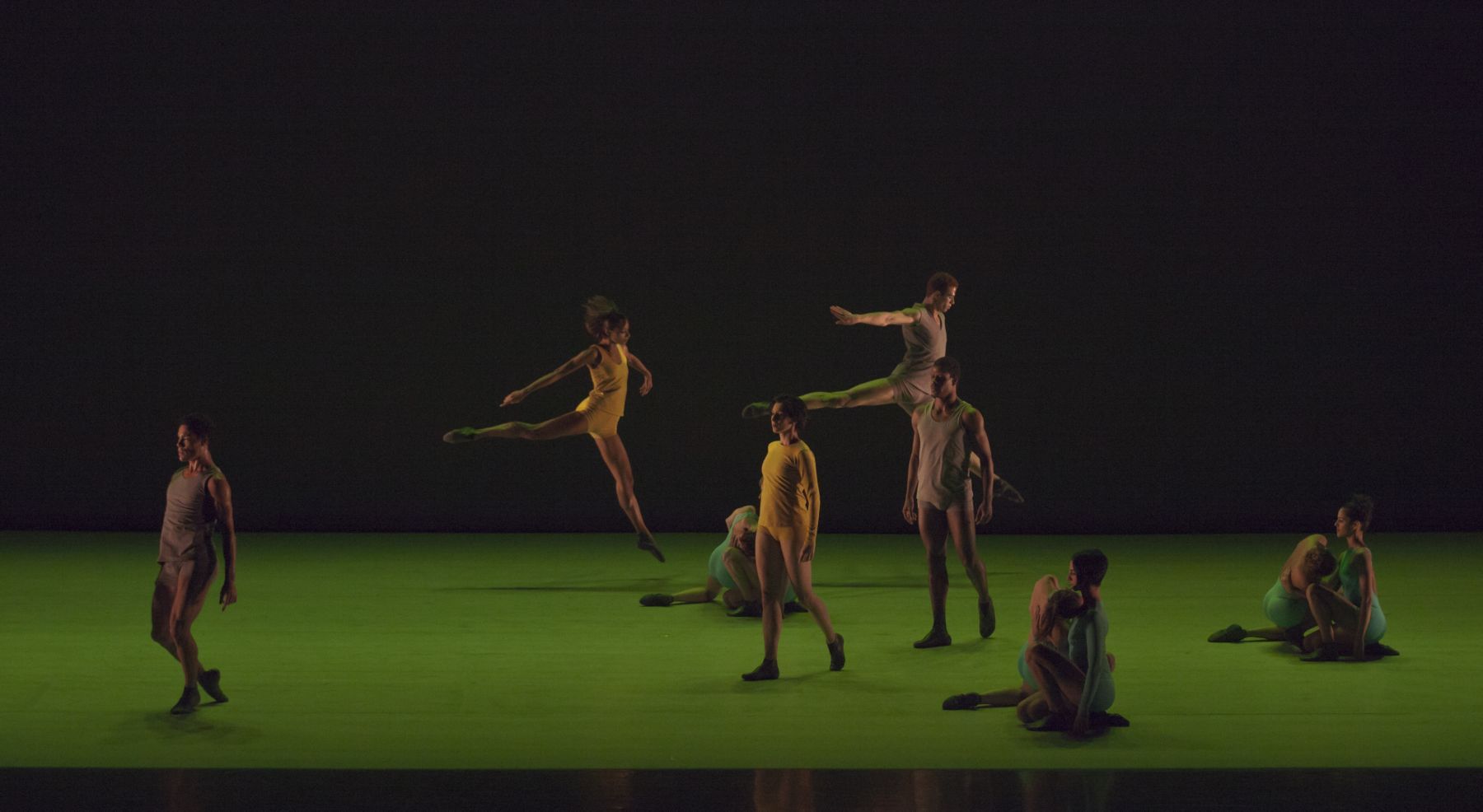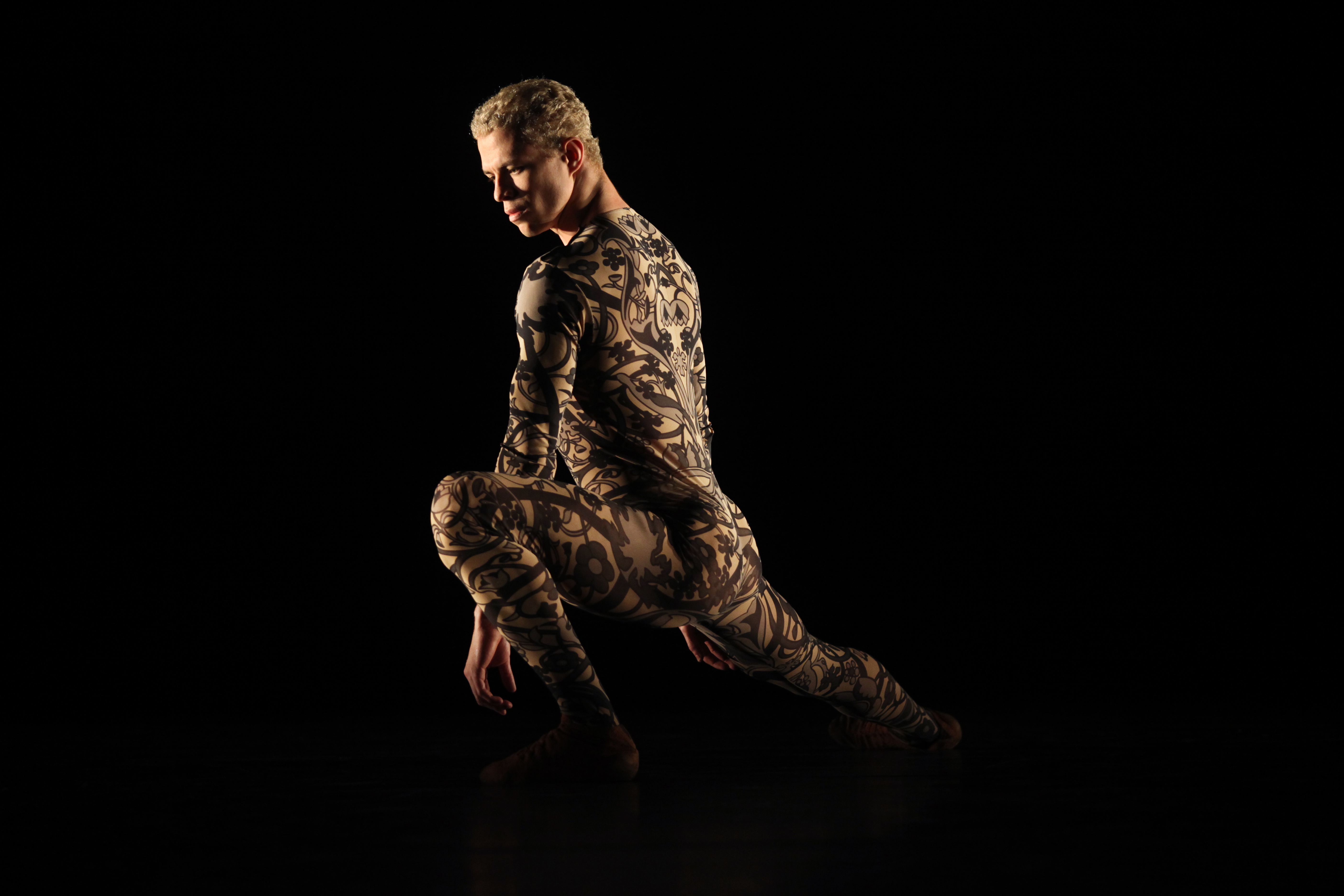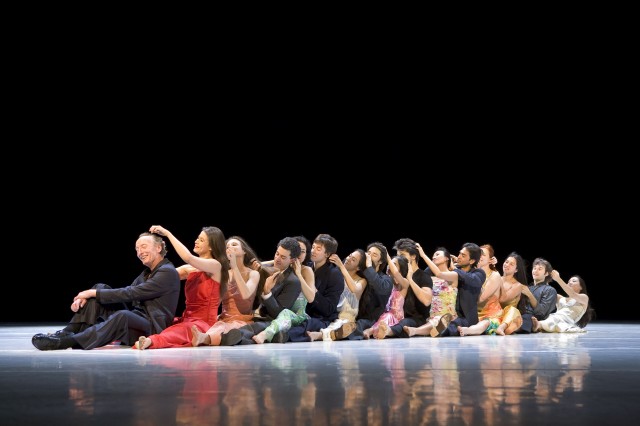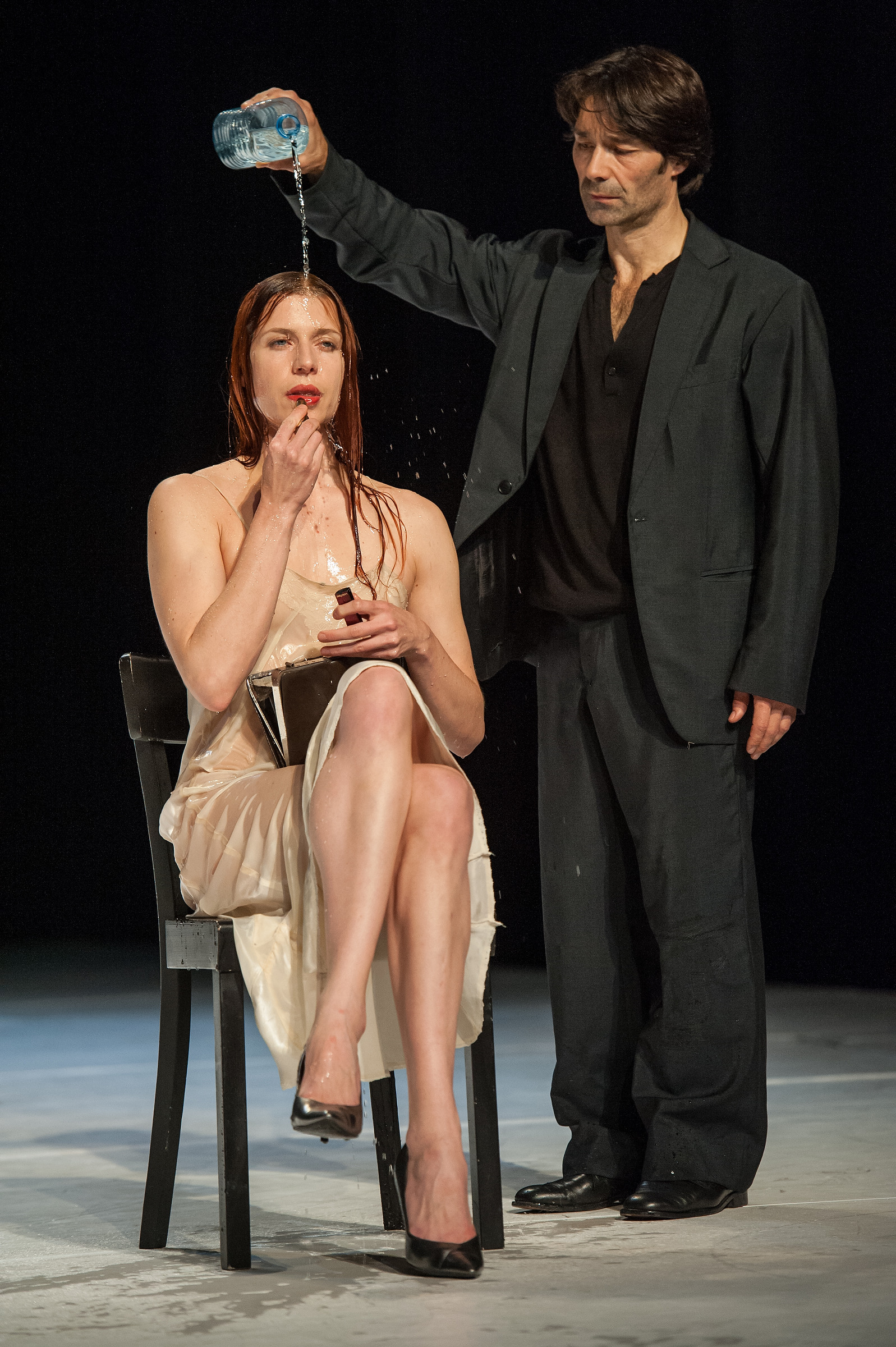Liberty Hall at the ACE Hotel
20 West 29th St. at Broadway
Tuesday nights at 9:00 through December 18 (no show November 20), $15-$20
www.thedancecartel.com
After spending about an hour and a half with the Dance Cartel, you might not know exactly quite what hit you, but you are likely to feel energized and exhilarated. The night opens with short, odd, off-kilter performance pieces but swiftly turns into a whirlwind of exuberant, electrifying movement. Held in the dark basement known as Liberty Hall in the Ace Hotel, OntheFloor begins with a curated series of extremely low-budget pieces of performance art that can range from very silly videos to an awful first-time comedian to an auction of remnants of artworks supposedly gathered off the streets of a Hurricane Sandy–rattled Chelsea. But then the Dance Cartel takes over, a group of costumed men and women who look and move like survivors from Pat Benatar’s “Love Is a Battlefield” video. Alexandra Albrecht, Aziza Barnes, Emily Bass, nicHi Douglas, Josh Palmer, Justin Perez, Ryan Ross, and choreographer and codirector Ani Taj Niemann make their way throughout the space, followed by the audience, as familiar bass-heavy rap, hip-hop, and pop songs vibrate off the walls, courtesy of DJs Max Pearl and Average Jo. Vadim Ledvin’s lighting goes from frenetic and emotional to cool and mysterious as the dancers take center stage, then run off into corners, hump walls, writhe on the ground, and gyrate against one another. MCs Chinaza Uche and Cyndi Perczek rev up the crowd as things get fast and furious, the dancers getting right in everyone’s face, eventually leading to a free-for-all finale. Codirected by Sam Pinkleton, the show also features video by Harrison Boyce and Stephen Arnoczy and live music by Rose Blanshei and BatalaNYC. People are encouraged to come early, stay late, and buy drinks at the bar; they also receive instructions asking them not to stand in front of any lights, to stay off cell phones unless tweeting or texting about the show, to get out of the way of flying bodies, and “If you want to dance, dance. If you want to jump, jump. If you want to sit over there, that’s lame but fine.”


